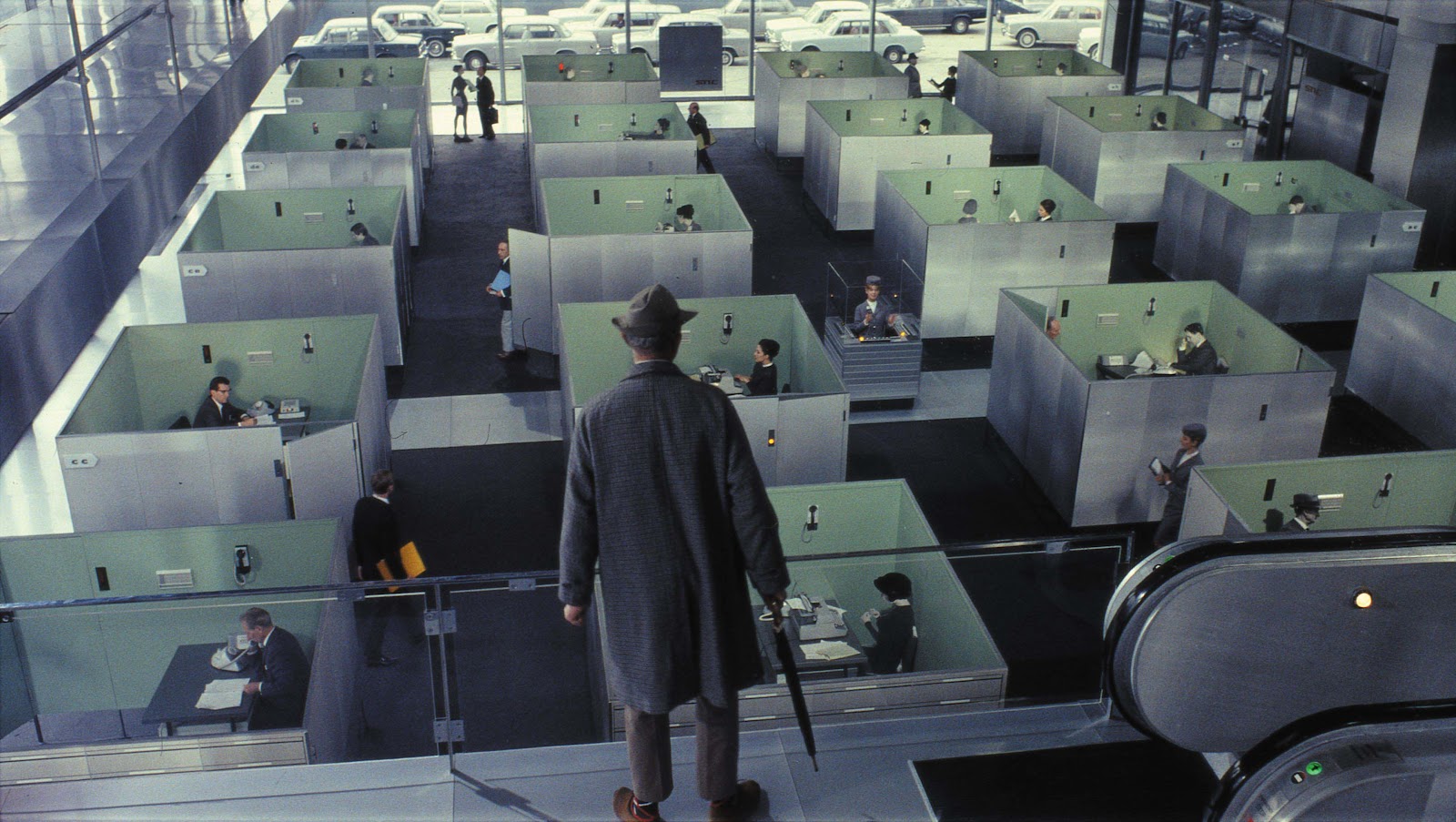
Film and architecture are two art forms completely different, but they have always interacted with each other in a meaningful and creative way. Films create cinematic spaces or settings in order to unravel stories that confront and amuse the public.
Architecture creates the spaces, buildings and cities where people spend their lives without even perceiving it as an act of creation. But in the meanwhile, film seems to be the only medium to portray space through time, evolving and fluctuating, occupied by people and cars, as the constantly changing environment it truly is.
No architectural design can ever manage to portray the feeling of space and the essence of movement. On the other hand, architects themselves, with their creative occupation, have often been heroes in films that portray their intellectual personalities. When dealing with such detailed, creative and constructive art forms, it is really hard to define who influences who. It all ends up in a question of “Which came first, the chicken or the egg?”
The following films depict this constant two-sided consolation between architecture and cinema in the best possible way. Some films might be about architects and their notorious lifestyles, some others are here for their innovative urbanistic approaches, others praise or influence specific architectural movements and some are here for their interesting approach towards space and their exquisitely constructed frames. However, all of them offer wide spatial interpretations and in some way interfere with architecture and architects.
1. Metropolis (1927)
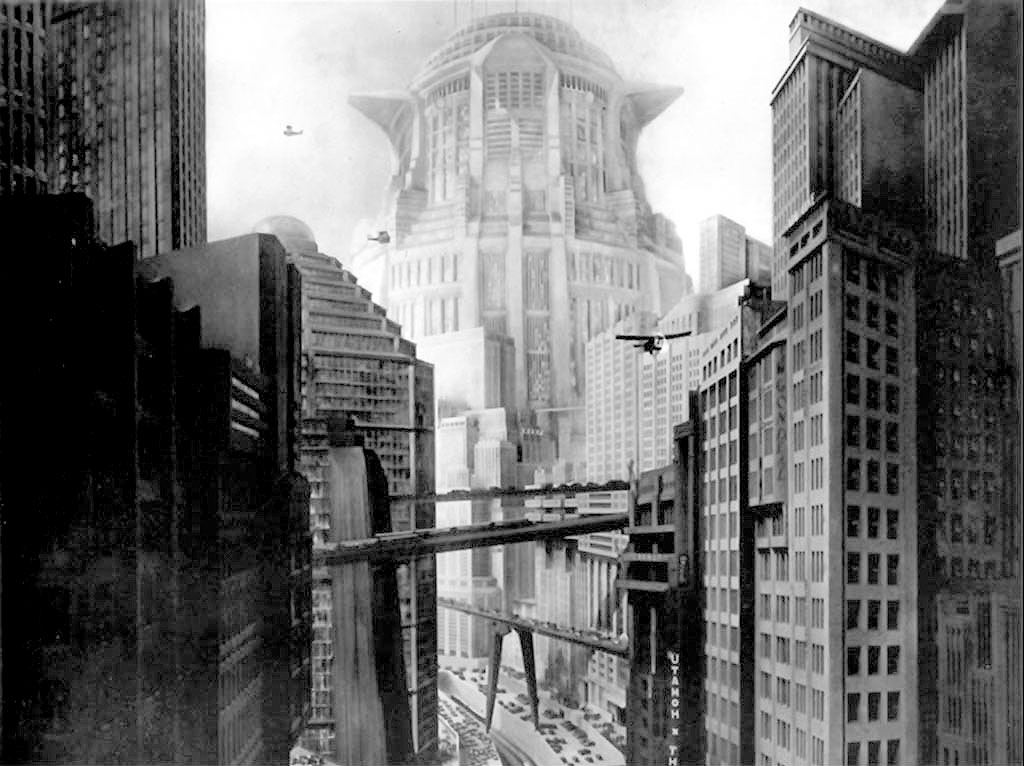
Metropolis is the story of a futuristic city where working class and upper class live strictly divided. The son of the city’s mastermind falls in love with a girl from the working class, who is a prophet of a messiah and a future revolution that will smooth out the differences.
The masterpiece directed in 1927 by Fritz Lang is a projection of all the nightmares and dreams for the humanity’s future with the machine. The working class lives inside dark catacombs dominated by machines and has to work day and night while the upper class of the city planners live in tall skyscrapers near the sun.
Some might call this movie a prophecy, since most of Lang’s predictions about urban theories and architectural monuments came to life. The movie though still remains scary and contemporary almost 100 years later.
It is hard to recognize one specific architectural style in the set designs of this urban dystopian Metropolis designed by Karl Vollbrecht. Elements of Art Deco, Bauhaus Modernism and Expressionism are merged with the dark, gothic catacombs of the underworlds.
The machines and the huge cast of exhausted labor workers dominate the city beneath, while the skyscraper of the Tower of Babel evaluates and proves the dominance of the upper class. In an architectural context, there is a strong essence of monumentality in the entire dystopian universe of Metropolis, which is defined by huge and obvious differences between the classes.
The entire movie concentrates on a futuristic city with all its political, social, economic and urbanistic and spatial aspects while remaining way ahead of its time.
2. The Belly of an Architect (1987)
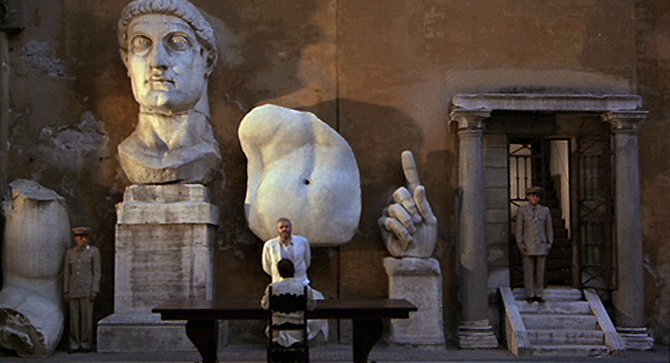
“The Belly of an Architect” follows the architect Stourley Kracklite in Rome, where he tries to conduct an exhibition dedicated to the architecture of Etienne-Louis Boullée.
There, he has to convince his co-workers for the need of such an exhibition on Boullée’s work, despite he never had the chance to build his designs and he was an influence for Adolf Hitler’s architect Albert Speer. Stourtley Kracklite becomes so absorbed by his project and the works of Boullée that he slowly loses his wife, his personal life, his motivation and health, developing obsessive behaviors and a stomach ache.
So what is aching in the belly of an architect? The need to create, the architectural conceptualization, classic beauty, struggles of pleasure and the pains of creative birth are the main topics concerning this film. A movie about an architect obsessing over another architect’s work while experiencing the stress and the joy of creation is as architectural as anyone can expect.
The camera wanders around the ruins of ancient Rome, enabling a deep and commanding cinematography as the movie grows more obsessive and depressing with time. The wonderful and demanding music of Wim Wenters gets in the head of the viewer, accompanying this story of mortality, obsession, abandonment and creation.
3. Mon oncle (1957)
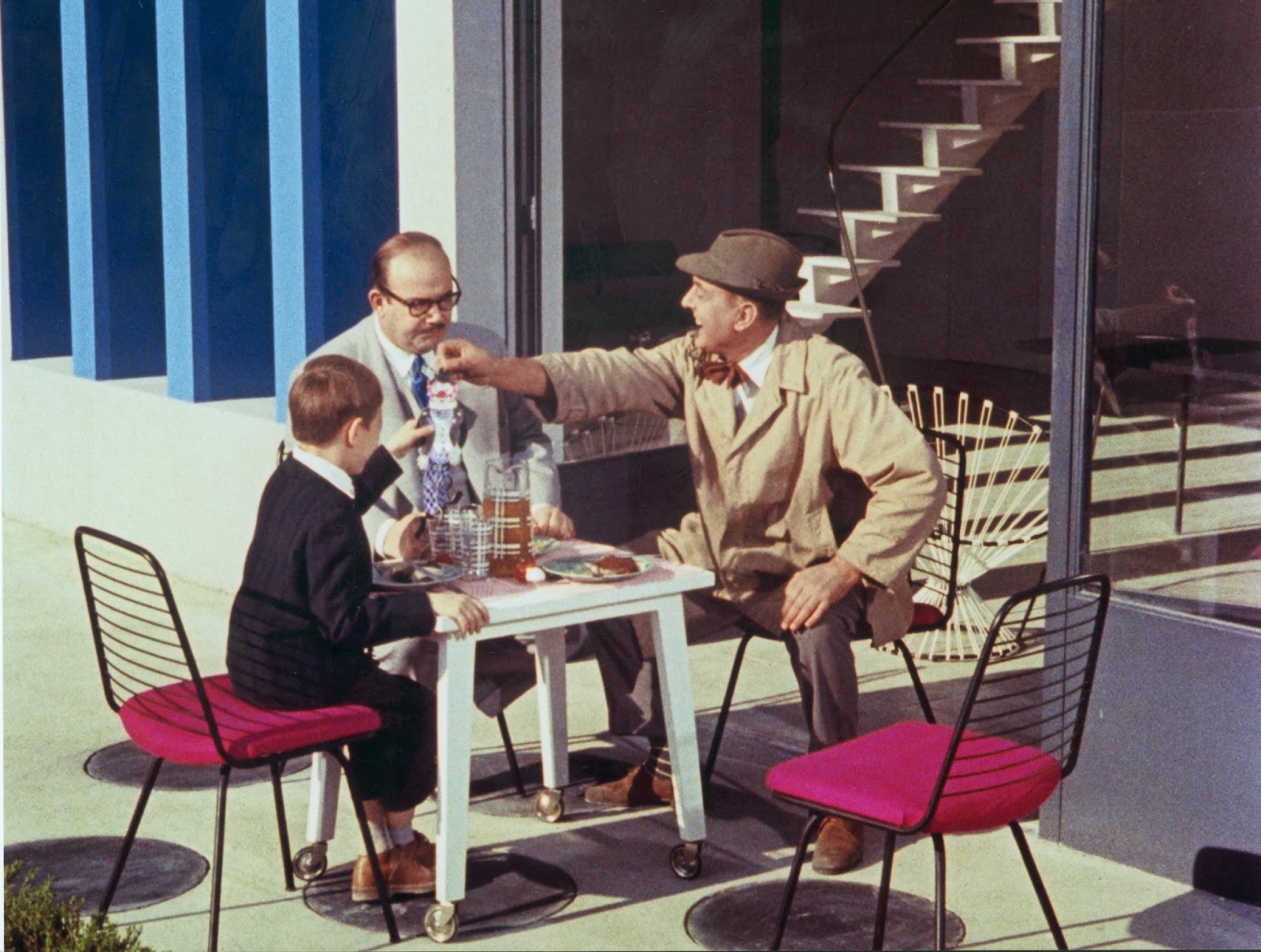
“Mon Oncle” portrays the distinct difference between everyday life in Paris and the pretentious lifestyles of those living in a modern house in the suburbs. Mr Hulot, the favorite character of Tati and a man with a pipe, a coat and an umbrella, visits the house of his sister, observing the new technology driven world.
The modern automatization, the electrical appliances, the advantages of modern architectural design, the constant ringing of bells scare and confuse the uncle and make him hide in the old world. The child of the family creates an intimate relationship with his speechless uncle, who wonders without any identity between the modernistic house and the everyday city, as an objective observer.
Tati is not using a specific scenario but offers us a great variety of colorful, stunning images in order to project not only the modern architectural environment of the house, but the city of Paris. The audience can devour into the carefully chosen spaces and the gracious cinematography, while enjoying the naïve and childish humor that is always present in Tati’s way of filming.
The repetitive music accompanies the viewer in a cinematic experience of the city life before and after the modernistic movement. Although he often films modernistic spaces that even today have the ability to amaze the eye of the viewer, he is distinguished by a sarcastic and ironic approach towards the occupants of modernism and a widespread nostalgia for the old times.
4. Professione: reporter (1975)
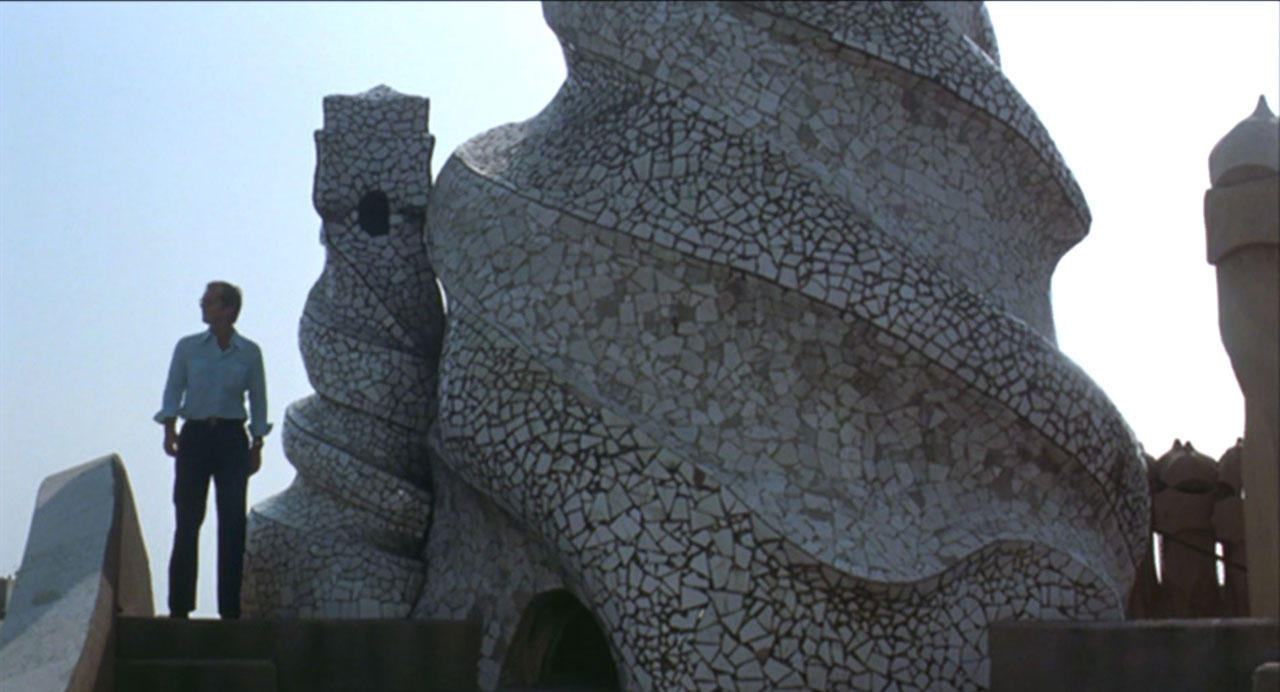
In this film, we follow a British-American reporter who steals the identity of a dead businessman during a trip in Africa in order to make a fresh start. He has no idea though, that this man was an arms dealer and he follows his life in London, Munich and Barcelona, trying to avoid the people who follow him around trying to kill him.
On his way he meets a girl (student of architecture) and falls in love with her. From third world Africa to big European cities, Antonioni has a magnificent way of portraying a great range of spaces and landscapes in film.
In the beginning of the movie, John Locke says “I prefer men over landscapes”, but during the film the viewer realizes Antonioni’s incredible ability to merge landscapes, images and people in a coherent entity. His camera wanders around in space, focusing on light and perspective while using architectural elements as frames of his images. Whether it is a portrait, a desert landscape or a room, Antonioni will portray the spatial elements in great detail, focusing on the shapes and the colors in a unique way.
The film is also a tribute in Barcelona, Spain’s landscape and the monumental architecture of Gaudi. The exquisite scene in Casa Mila manages to film Gaudi’s masterpieces in full glory without abandoning the plot elements. After all, as the female architect claims that if someone ever hoped to disappear, Gaudi’s buildings would be the perfect place to do so.
5. The Fountainhead (1949)
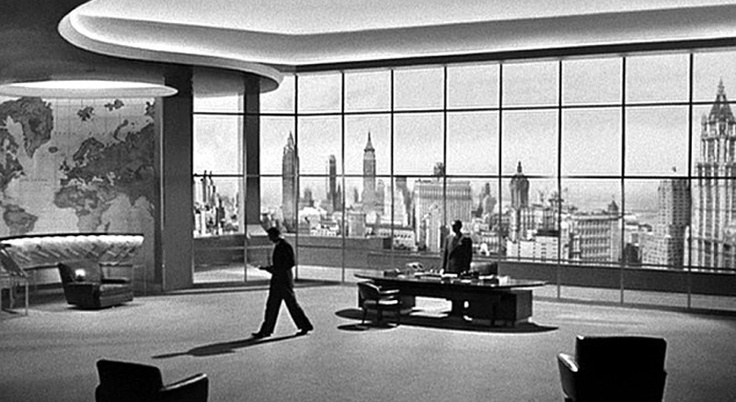
“Fountainhead” is the journey of a young architect eager to climb the success ladder of an innovative architectural career without abandoning his ideals. It is definitely an ode to modernism, constantly promoting the architecture and the conceptual ideas that defined the modernistic movement expressed through the heroes’ words.
This movie has a magnificent way to turn architects into heroes of the modern society, as creative spirits that transmit themselves spiritually through the eternity of their buildings. Rookie, the hero of the movie is a man willing to work as a construction worker, while waiting for the perfect opportunity to create his personal architectural stigma, instead of compromising to his potential customer’s opinions.
He is a free and independent man with no expectations whatsoever, ready to follow his dreams, his own way at any cost. Architects must remain true to their ideas and goals and not compromise to corporations or customer in order to create unique masterpieces. The top goal is not just to build but to build on your own rules, a building that expresses yourself as a whole.
The movie possesses definitely all the elements of classic Hollywood, with well-defined male-female roles, a touch of romance and at the same time an acknowledgement of the creativity and magnificence concerning the architectural profession. Somehow it manages to combine the golden era of architecture with the golden era of Hollywood in a modernistic result.
The environment of the film is filled with the skyscrapers that defined modernism and were so popular at those times. Minimal environments of steel, glass and concrete mesmerize the viewer. On the contrary, the inside of the buildings enhances a sense of classicism with ancient Greek columns and sculptures, filling the interiors where the camera wanders.
Overall, this is a film entirely focused on the modernist movement not only as a spatial environment but as a set of goals, ideals and concepts that inspired great men to create unique architectural masterpieces. “Form follows function” could be the resume of the Fountainhead.